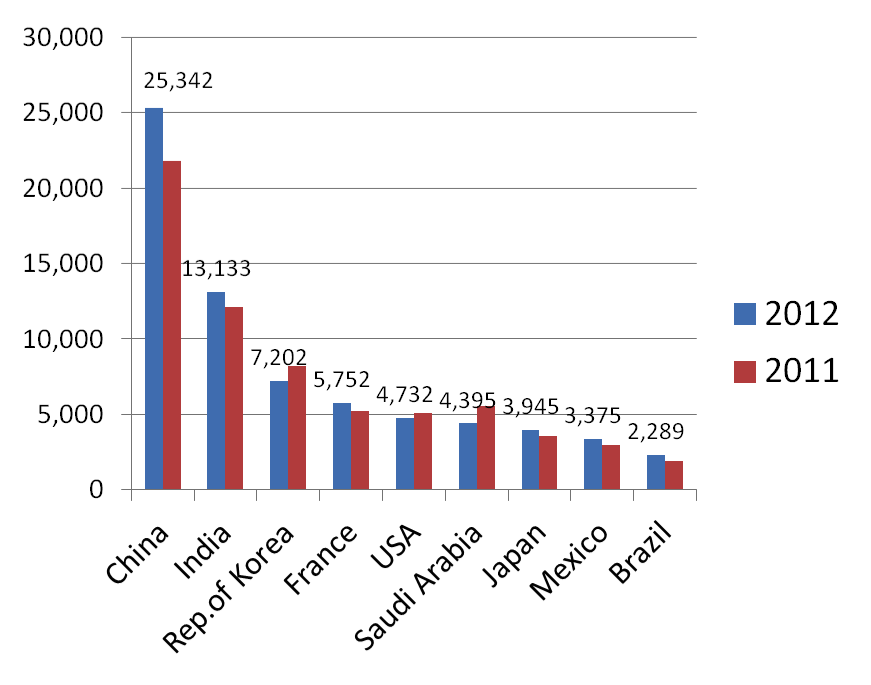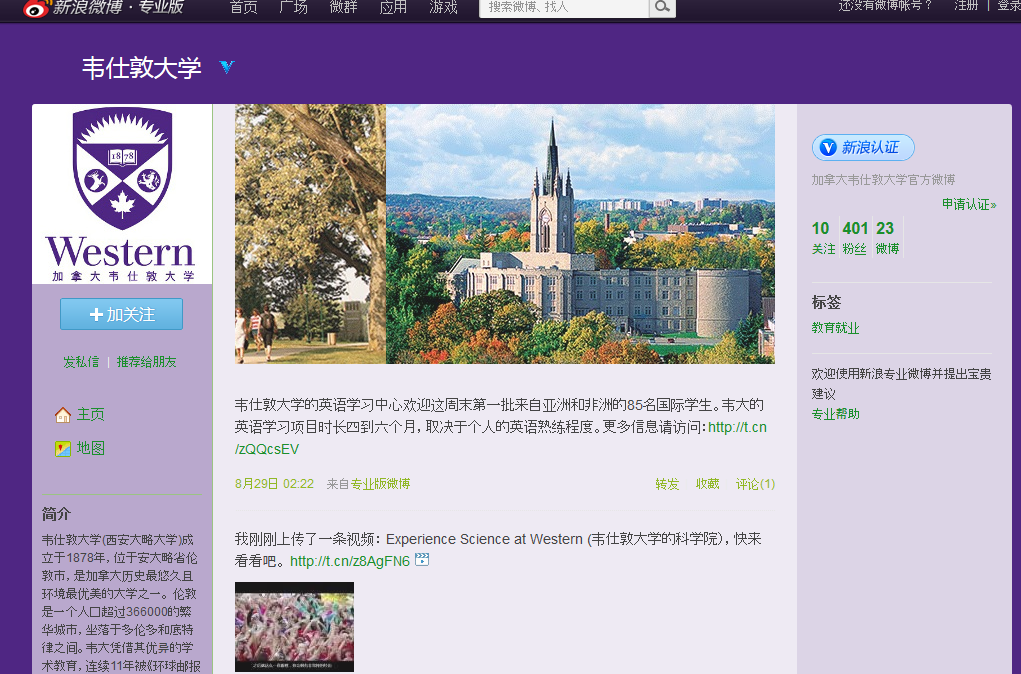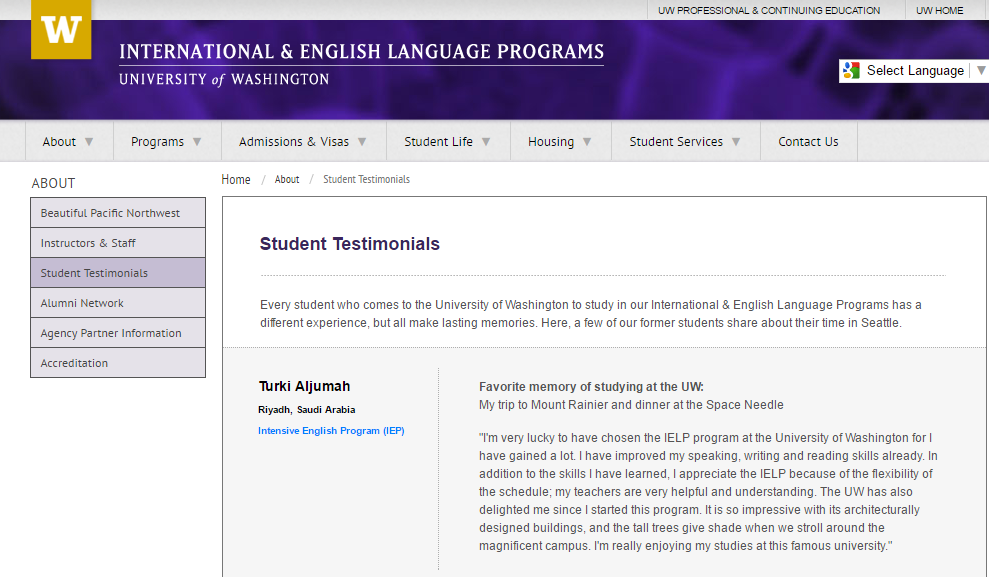China represents a source of endless fascination for college and university admission departments. According to the Chinese Ministry of Education, the number of students from China studying abroad rose by 17.7% from 2011 to 2012, up to 399,600 – easily the largest international student population in the world. A combination of increasing wealth, as the nation rapidly transitions to a knowledge-based economy, and the prestige of an overseas education, has convinced a reported 90% of affluent Chinese parents that sending their kids to an English-speaking country is worth the investment.
And they are increasingly kids – the average age of students overseas has significantly dropped, with over 100,000 Chinese students as young as 10 estimated to have flocked to US summer preparatory programs this year. As desire for a foreign education soars, interest in the ultra-competitive gaokao Chinese college entrance exam is steadily shrinking. Since 2006, there has been an over 40% drop in students taking the gaokao, which typically demands an intensely stressful year of study. More and more younger students are instead taking Western standardized exams, such as the SAT and TOEFL, with an estimated 30% increase in students under 18 taking the latter last year. Surging Asian demand for the SAT has prompted recent plans for its redesign.
Education is a national priority in China, representing a $250 billion annual investment in “human capital.” Since a massive reform and expansion of the Chinese higher education system was announced 15 years ago, university enrollment has more than tripled to become the largest in the world. While the country’s capacity has expanded, some wealthy Chinese parents believe their homegrown courses are too rigid and one-dimensional. However, when attempting to enroll their children in the best overseas schools, there is a tendency for them to assume that the same political and economic connections will apply elsewhere, and it is not uncommon for admissions agents to be offered substantial sums in expectation that their son or daughter with poor grades will be accepted.
 Top Source Countries for Canadian International Recruitment
Top Source Countries for Canadian International Recruitment
Understanding cultural differences
Patience is required when developing strategies for Chinese student recruitment. This mammoth market was barely accessible even a few years ago and there exist significant differences in value systems to be aware of. The intense pressure on students to score highly on important tests encourages memorization over critical thinking skills, and some individuals teaching in China have been shocked by the extent of plagiarism in student papers. There has been a slowly growing appreciation of international cultural differences and parents are increasingly open to ethical and cultural counseling to ease assimilation abroad.
China’s swift economic ascent has created many new millionaires and a highly ambitious middle class with a taste for luxury, which includes a world-class education. Progressively sophisticated students are attracted by brand prestige and the perceived elite status of your institution. Colleges and universities might appeal to these preferences by investing in glossier promotional materials that emphasize a beautiful campus and historic surroundings, famous graduates, and world-class professors. Since Chinese students are more likely than their American peers to demand technology in the classroom, state-of-the-art facilities and innovative technological integration should be promoted. As energy efficiency and innovative design have been identified as national development priorities, engineering is the most popular undergraduate major in China.
Student mobility changes
While top universities in the U.S. and U.K. with well established brands have been the early winners in attracting Chinese students, increasingly restrictive visa requirements in these countries and concern for return on investment are working to the advantage of schools in Canada and Australia. The University of Sydney now accepts the gaokao as an application credential and as university agreements between the two countries have leapt almost 75% in under ten years, China has replaced the U.S. as Australia’s “biggest knowledge partner.”
An active embassy in China is seen as an essential step for developing coordinated messages of national branding. The Canadian government has placed a recent focus on targeting “priority markets” to brand the country as an ideal study destination, and last year reached an agreement with China to expand two-way academic mobility, aspiring to reach a combined goal of 100,000 students studying in each other’s countries within five years. We have written previously about the value of international student recruitment to a national economy, and it seems all types of institutions have been seeking partnerships and cooperative credit transfer agreements to foster longer term student mobility. While China is considering a ban on unregistered foreign-based agencies recruiting for study abroad, many institutions have official representatives in China to overcome the complications of applying overseas.
Example: York University has strived to raise its profile internationally, developing relationships with institutions in Beijing, Chongqing and Hong Kong to become more visible in China. They have a full-time representative in China with email addresses in both English and Chinese.
The immensity of recruitment potential in China means that there remains great opportunity for smaller or more vocational schools, including partnering with larger agencies. China Daily reports that many Chinese students are attending two-year community colleges in the U.S. to save money and then transferring to universities to gain bachelor degrees. These 2+2 degree options are popular with a wide range of increasingly mobile international and domestic students and as word of mouth spreads, some colleges are seeing exponential growth in Chinese students.
Optimizing website communication
Prospective Chinese students tend to choose a destination country in the first step of their selection process through Chinese search engine Baidu. They commonly seek a “top university” in a particular subject, with no specific place or institution in mind. Effective content strategy and development begins with having a dedicated Chinese expert to focus communication towards your best programs and key selling points for this market. Keep your branding consistent because Chinese students won’t always believe what they see online. Clearly express your application and visa policies while noting star Chinese alumni and lecturers if possible. Keep sustained contact with prospects throughout the entire recruitment and admissions cycle, beginning with an auto-response to website enquiries.
Although Facebook, Twitter and YouTube are blocked there, many schools are breaking through the Great Firewall of China by using national platforms like Sina Weibo, which hosts over 400 million users – including 80% university students! This micro blogging platform is a hybrid between Facebook and Twitter and is a great tool for engaging with students in a format familiar to them. QQ (40.3 million users) and Renren (100 million users) are other popular social networking sites and YouKu is the Chinese equivalent to YouTube.
Example: Western University features videos, news and conversation starters on its Weibo site.
Alumni Networking and Transnational Education
An alumni network is an excellent resource for international recruitment and retention. As word of mouth and networking is particularly important for Chinese marketing, procedures should be implemented to ease the transition of current students, while communicating non-judgmentally the cultural differences. Current and former students can answer questions from prospects while reaching out to their networks.
As Chinese higher education becomes more harmonized with other parts of the world, we will see more transnational education in which students can receive foreign degrees and certifications from their home country. NYU’s newest portal campus is in Shanghai, offering a study away option for students to broaden their cultural experience.
Example: The University of Waterloo established the Sino-Canadian College in partnership with Nanjing University as a result of more than 20 years of collaboration, to offer joint academic programs, exchanges, short courses, and collaborative research.
Long-term institutional commitment is necessary for building meaningful Chinese recruitment and broader internationalization should be the end goal. Continue to measure the success of your overall admissions goals, including analyzing your progress with Google Analytics.
What has your school done to encourage Chinese admissions?








